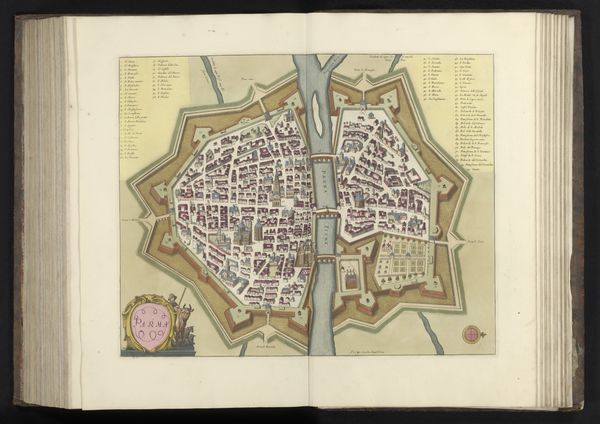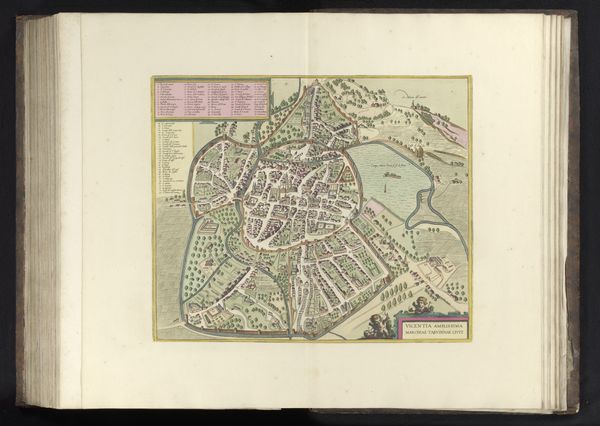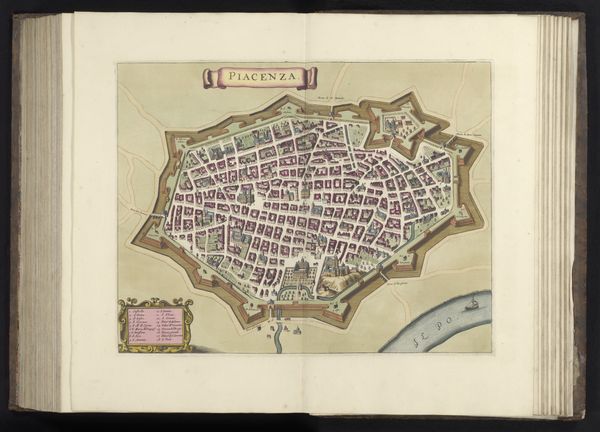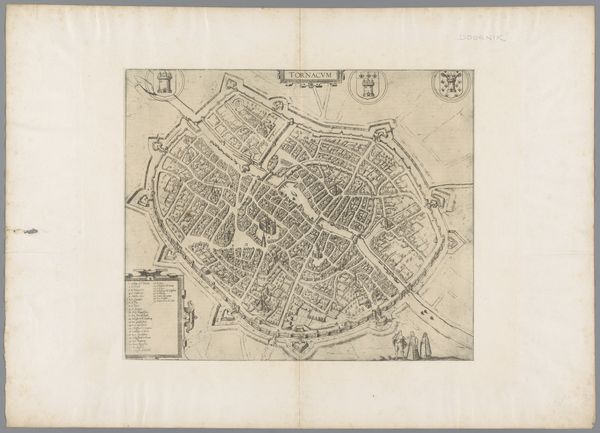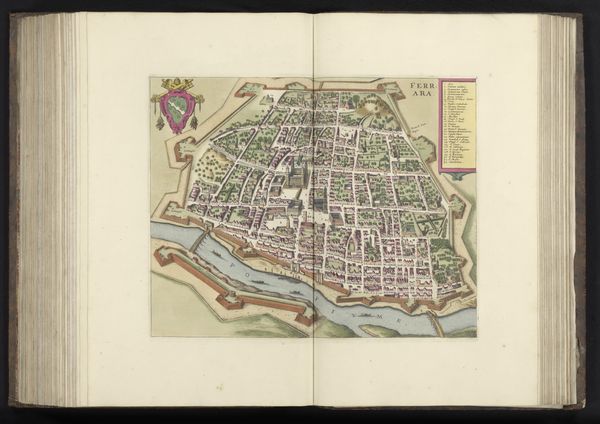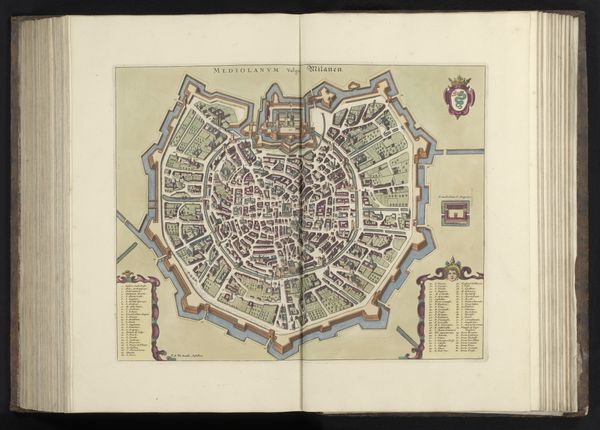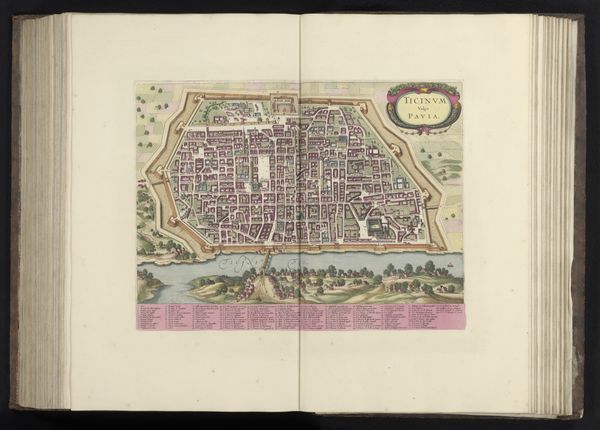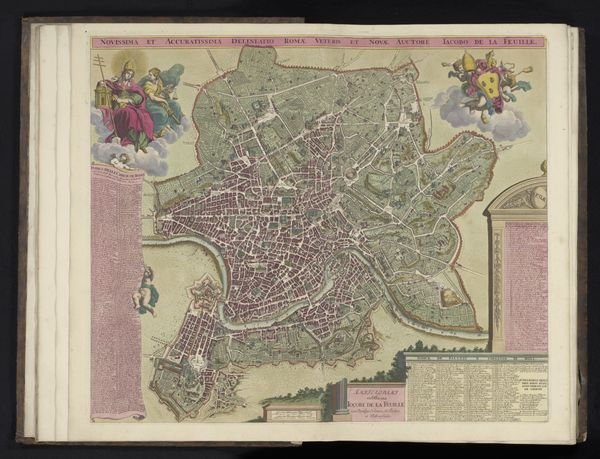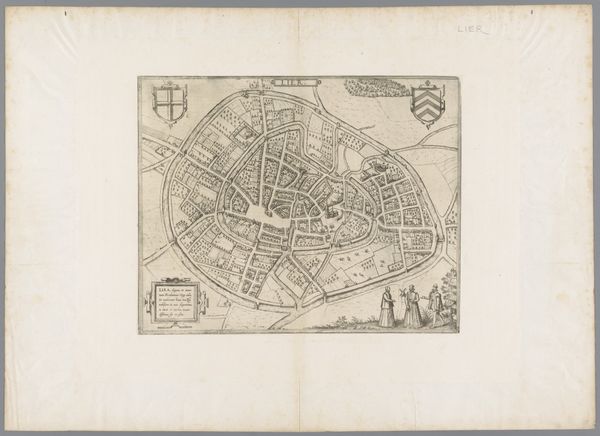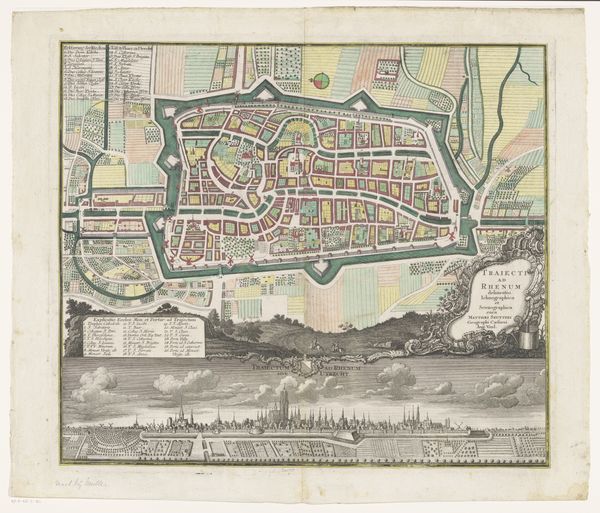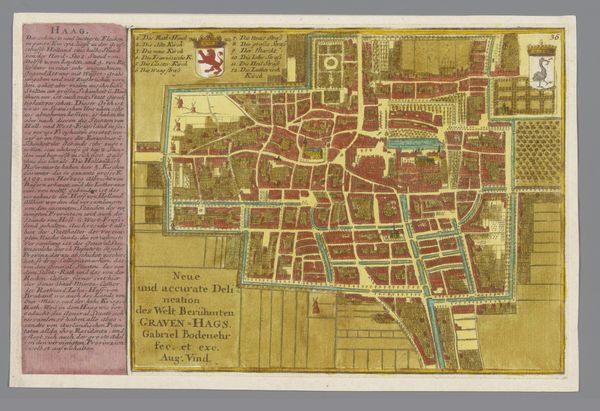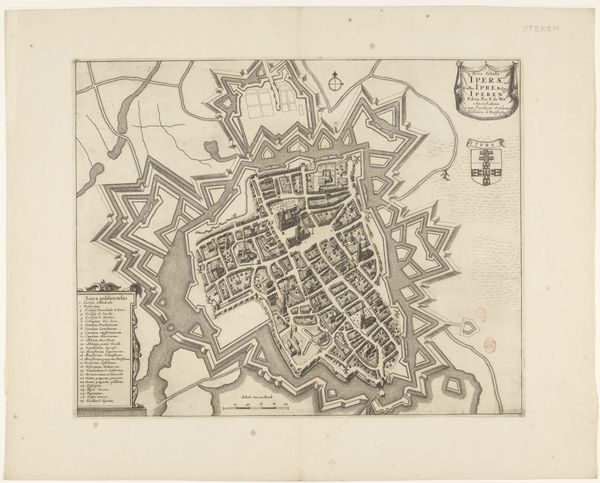
print, paper, ink, engraving
#
baroque
#
ink paper printed
# print
#
paper
#
ink
#
linocut print
#
pen work
#
cityscape
#
engraving
Dimensions: height 408 mm, width 510 mm
Copyright: Rijks Museum: Open Domain
Editor: Here we have "Gezicht op Padua in vogelvluchtperspectief," a cityscape print made with ink on paper, dating potentially from 1639 to 1717, here at the Rijksmuseum. It's an aerial view of Padua, quite detailed. What I find fascinating is how this visual representation reflects the power dynamics and the idea of control over urban space. What do you see in this piece? Curator: The city plan as a political statement is a very interesting entry point. Indeed, the cartographic precision of the 'Gezicht op Padua' reflects more than just geographical accuracy; it embodies the emerging power structures of the early modern period. Consider, for instance, how these cityscapes served to bolster civic pride and project an image of order and control – who benefits from that portrayal and how? How do we grapple with what isn't shown? Editor: So, it's about who gets to define and display the narrative of the city. Like a form of propaganda? Curator: Exactly. These maps normalize specific visual conventions. Notice the clean lines, the defined boundaries. Ask yourself: Whose perspective is privileged here? It certainly isn’t the perspective of someone experiencing the city from the ground level, from within the tightly packed streets. The artistry conceals very specific politics of space. It subtly erases the lived experiences of everyday individuals, perhaps even reinforcing the idea of a collective, controlled identity. What does that say about community, individuality, and power during that era? Editor: It's like the map is designed to reinforce existing power structures and promote a certain idealized image of Padua, leaving out social complexities. Thank you for helping me view this beyond its aesthetic surface! Curator: Precisely, looking beyond the visual allure and interrogating these hidden layers—that's where the real learning begins. This makes me want to reflect on the maps of our own moment. What kind of realities do our contemporary maps create, maintain and erase?
Comments
No comments
Be the first to comment and join the conversation on the ultimate creative platform.
